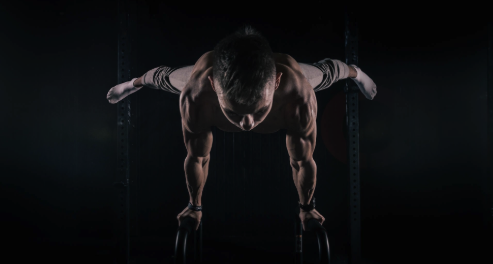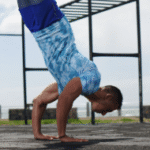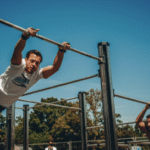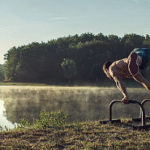Handstand progressions for intermediate
Once you can hold a basic handstand against a wall, you’re ready to move into intermediate progressions. This phase of training is about building the body awareness, strength, and balance needed to eventually hold a handstand without wall support. The goal is to move from a static, wall-supported position to a more dynamic, controlled freestanding handstand.
For those in Houston, there are many calisthenics gyms and specialized studios that offer handstand classes. These are great places to find a coach who can provide personalized feedback on your form.
- Shape Shifts: Building Awareness and Control
This is a core intermediate drill. Once you’re comfortable holding a handstand against the wall (belly-to-wall is best), start experimenting with different body shapes. This teaches you how to control your body’s center of gravity and make the micro-adjustments needed for a freestanding handstand.
Tuck-to-Straight: In your belly-to-wall handstand, bring your knees into your chest to form a tuck. Hold for a few seconds, then slowly extend your legs back into a straight handstand. This drill builds core strength and control.
Straddle-to-Straight: From a handstand, slowly open your legs into a straddle shape. Hold it, then slowly bring your legs back to a straight line. This helps you understand how shifting your leg position affects your balance.
Tuck-to-Straddle: This is a more advanced combination drill. Move from a tuck position to a straddle, and then back to a tuck without touching the wall. This is a great way to link shapes and build dynamic control.
- Off-the-Wall Practice: Finding Your Balance Point
The wall is a crutch, and to progress, you need to start leaving it. These drills are designed to help you find your balance point and learn to rely on your own strength and control.
Shoulder Taps: In a belly-to-wall handstand, shift your weight from one arm to the other and tap the opposite shoulder. Start by simply shifting your weight, then gradually move to lifting your hand off the ground. This drill teaches you to stabilize and shift your weight from side to side, which is a key skill for handstand walking.
Wall Handstand Lifts: Get into your belly-to-wall handstand. Slowly and with control, lift your feet an inch off the wall. Hold for a second or two, then return to the wall. This teaches you how to catch your balance and get comfortable with being completely freestanding, even if only for a moment.
Freestanding Kick-Ups: This is the ultimate test. Start with a lunge and a controlled kick up. The goal is to kick up with just enough momentum to find the balance point without overshooting it. Practice this with a spotter or against a wall so you can safely fall.
- Strength and Endurance: Advanced Conditioning
Intermediate handstand training requires more than just technique; it needs increased strength and endurance to maintain a hold for a longer period.
Pike-to-Handstand: From a pike position on the floor, lift your feet off the ground and press into a handstand. This is a tough drill that builds immense shoulder and core strength. It’s a key progression toward the coveted press-to-handstand .
Handstand Push-Ups (Wall-Assisted): Start with wall-assisted handstand push-ups. This builds the pushing strength you’ll need for a freestanding handstand push-up later on. Lower your head towards the floor by bending your elbows, then press back up.
Finding a Coach in Houston
If you’re an intermediate handstand student in Houston, it’s highly recommended to work with a coach. They can spot you, correct your form, and provide a structured program. Some popular options in Houston include:
Calisthenics Gyms: Many calisthenics gyms in Houston offer dedicated hand-balancing classes for all levels, including intermediate.
Acrobatics and Circus Studios: Studios focused on circus arts and acrobatics often have coaches who specialize in handstands and can provide an excellent curriculum.
Private Coaches: For a personalized approach, consider a private coach who can give you one-on-one attention and tailor a program to your specific goals and weaknesses.
By focusing on these drills, you’ll build the strength, balance, and body awareness needed to move past the wall and achieve your freestanding handstand goals.

Handstand progressions for intermediate
Route
Calisthenics Gym Houston Functional Bodyweight Training
Secondary phone: (346) 483-3195
Email: info@calisthenicsclubhouston.com
URL: https://calisthenicsclubhouston.com/
Monday 6:00 AM - 7:00 PM Tuesday 6:00 AM - 7:00 PM Wednesday 6:00 AM - 7:00 PM Thursday 6:00 AM - 7:00 PM Friday 12:00 PM - 6:30 PM Saturday 9:45 AM - 12:00 PM Sunday 3:00 PM - 5:00 PM






